Kanga Exchange Fee Calculator
| Feature | Kanga Exchange | Binance | Coinbase | Kraken |
|---|---|---|---|---|
| Crypto assets listed | 140+ | 1,000+ | 700+ | 500+ |
| Spot fee (standard) | 0.2% | 0.1% (VIP tiers lower) | 0.5% (no discount) | 0.26% (maker) / 0.30% (taker) |
| Futures leverage | Up to 100× | Up to 125× | Not offered | Up to 50× |
| Physical OTC points | 250+ in 12+ countries | None | None | Limited (partner kiosks) |
| Regulatory licence | Seychelles + PFSA oversight | Various (US, Malta, etc.) | US, EU, UK licences | US, EU licences |
| Trustpilot rating |
When you hear about a crypto exchange that lets you walk into a shop and swap cash for Bitcoin, you probably think of a niche service. Kanga Exchange is a Poland‑based cryptocurrency exchange launched in 2018, regulated by the Seychelles and backed by the Polish Financial Supervision Authority. It promises a hybrid model - a slick web platform, mobile apps, and more than 250 brick‑and‑mortar points across Europe. This review breaks down what you actually get, how the fees stack up, and whether the security claims hold water.
Quick Take
- Supports 140+ coins and 200+ spot pairs - far fewer than Binance but enough for most retail traders.
- Spot fees are a flat 0.2%; futures fees match industry standards (0.02% maker, 0.07% taker).
- Unique physical OTC network lets you convert cash to crypto in person.
- Two‑factor authentication and multi‑chain wallets meet basic security needs, but trust scores sit at 2.8/5 on Trustpilot.
- Best for European users who need cash‑in/out options; less compelling for high‑frequency global traders.
How Kanga Exchange Is Structured
At its core, Kanga runs a proprietary web platform that you can reach from any browser. The same engine powers native iOS and Android apps (version1.26.0 introduced futures trading on mobile). The platform offers three main product lines:
- Spot trading - simple buy/sell with a flat 0.2% fee.
- Futures contracts - up to 100× leverage, maker/taker fees of 0.02%/0.07%.
- OTC & physical locations - over 250 exchange points where you can hand over cash and walk out with crypto.
All services sit under a Seychelles licence, while the Polish Financial Supervision Authority (PFSA) provides an extra layer of oversight for European users.
Key Features Compared to the Big Players
Below is a side‑by‑side look at how Kanga stacks up against three market leaders. The table uses Binance, Coinbase, and Kraken as benchmarks.
| Feature | Kanga Exchange | Binance | Coinbase | Kraken |
|---|---|---|---|---|
| Crypto assets listed | 140+ | 1,000+ | 700+ | 500+ |
| Spot fee (standard) | 0.2% | 0.1% (VIP tiers lower) | 0.5% (no discount) | 0.26% (maker) / 0.30% (taker) |
| Futures leverage | Up to 100× | Up to 125× | Not offered | Up to 50× |
| Physical OTC points | 250+ in 12+ countries | None | None | Limited (partner kiosks) |
| Regulatory licence | Seychelles + PFSA oversight | Various (US, Malta, etc.) | US, EU, UK licences | US, EU licences |
| Trustpilot rating (2025) | 2.8/5 | 4.5/5 | 4.2/5 | 4.1/5 |
Fees - What You’ll Actually Pay
Fees are where many traders draw a line in the sand. Kanga keeps it simple:
- Spot trades: flat 0.2% per transaction, no maker/taker split.
- Futures: 0.02% maker, 0.07% taker - on par with ByBit and BitMEX.
- Deposits: fiat deposits via bank transfer are free; crypto deposits incur no network fees.
- Withdrawals: vary by coin - e.g., Bitcoin withdrawal costs ~0.0005BTC, Ethereum ~0.005ETH.
- OTC cash‑in: each physical point may charge a 1-2% spread, depending on local cash‑handling fees.
If you trade a lot on spot, the flat 0.2% can feel pricey compared to tiered models on Binance. However, the single‑rate model makes budgeting easy, especially for newcomers.
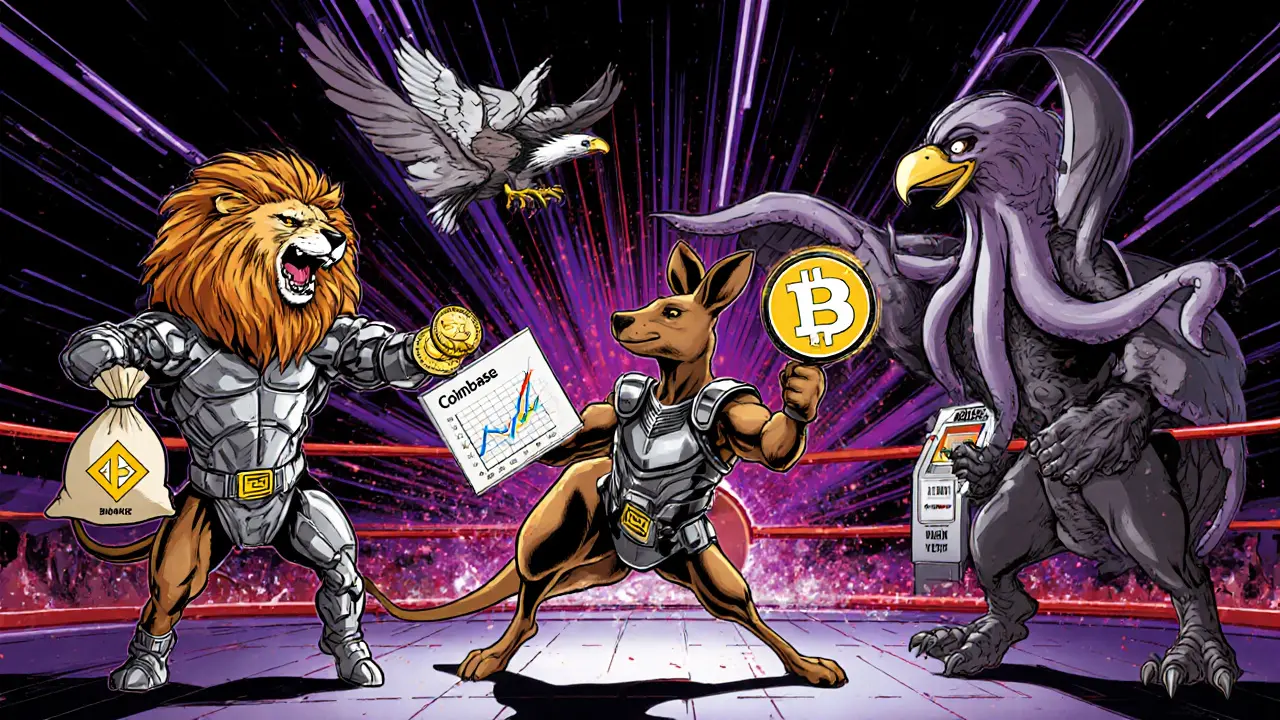
Security - How Safe Is Your Money?
Security is a non‑negotiable factor. Kanga implements the basics well:
- Two‑factor authentication (SMS, authenticator apps).
- Cold‑storage of the majority of user funds - roughly 85% kept offline.
- Multi‑chain wallet architecture that isolates each blockchain.
- Regular penetration testing by third‑party firms (names not disclosed).
What it lacks are some of the advanced safeguards you see on larger platforms: hardware‑security‑module (HSM) custody, insurance funds, and real‑time anti‑money‑laundering AI monitoring. The 2.8 Trustpilot score often reflects missed support tickets during high‑traffic events rather than a breach, but it does hint at operational friction.
Getting Started - A Step‑by‑Step Walkthrough
- Visit the Kanga website or download the iOS/Android app.
- Create an account using email and a strong password.
- Complete KYC - upload a government ID and proof of address. Verification typically finishes within 24‑48hours for EU residents.
- Fund your account. Choose a fiat method (PLN, EUR, USD) via SEPA transfer or credit card, or send crypto from an external wallet.
- Navigate to the ‘Spot’ tab, pick a pair (e.g., BTC/PLN), and place a market or limit order.
- If you need cash, locate the nearest OTC point via the app’s map feature, walk in, and swap cash for crypto on the spot.
- Enable 2FA under ‘Security Settings’ for added protection.
The whole process usually takes 2-3hours from sign‑up to first trade - a reasonable learning curve for beginners.
Pros and Cons - The Bottom Line
Every platform has trade‑offs. Here’s a concise list:
| Pros | Cons |
|---|---|
|
|
Who Should Use Kanga Exchange?
If you live in Poland, the Czech Republic, or nearby EU countries and want the option to walk into a shop and buy crypto with cash, Kanga is a strong candidate. Institutional traders looking for compliant OTC services also find value in the brick‑and‑mortar network. Conversely, high‑frequency traders, DeFi power users, or anyone needing deep liquidity should probably stick with global giants.
Future Roadmap - What’s Coming Next?
Kanga’s 2025 roadmap mentions a few key upgrades:
- Expanded mobile futures features - more order types, better charting.
- Additional crypto listings, targeting emerging DeFi tokens.
- Roll‑out of the BeCryptoVIP NFT membership across all European locations.
- Plans to enter Western European markets (Germany, France) pending new licences.
These moves aim to raise the platform’s appeal beyond its current niche, but execution will be crucial. Competing against Binance’s 24/7 product rollout will be an uphill battle.
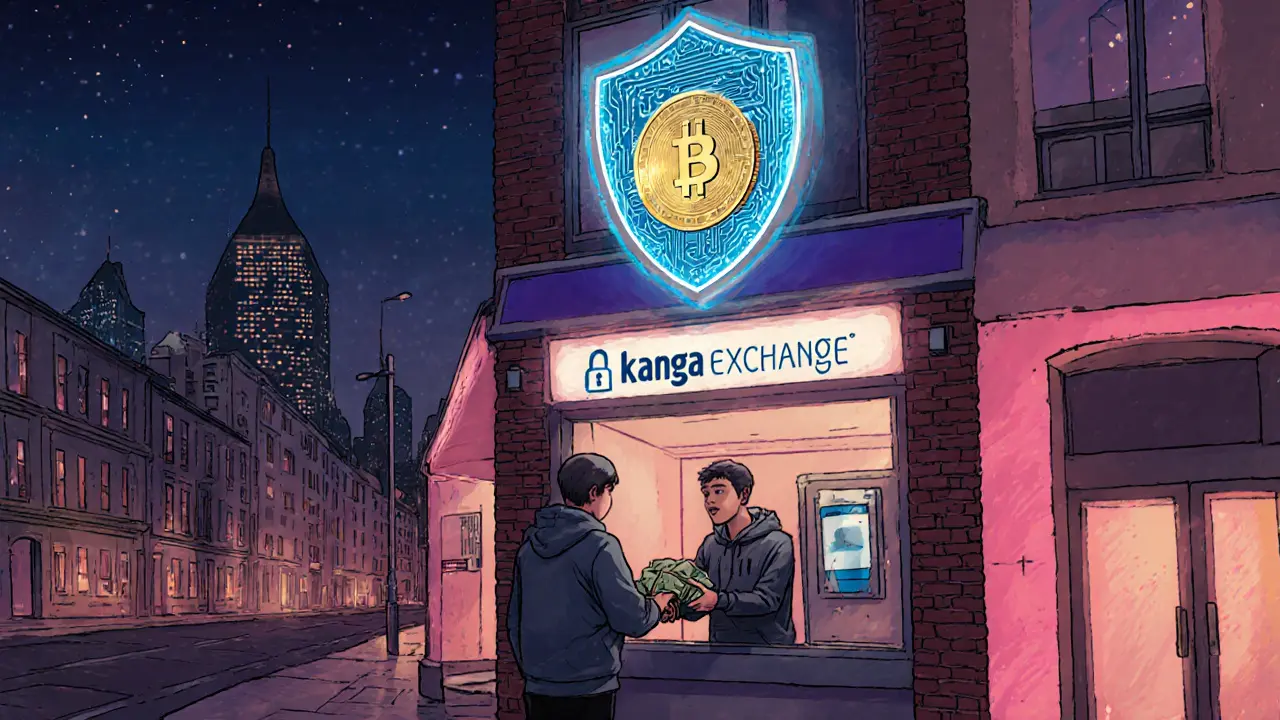
Frequently Asked Questions
Is Kanga Exchange safe for large deposits?
Kanga keeps most funds in offline cold storage and requires 2FA for logins, which meets basic security standards. However, it lacks insurance coverage and advanced AML monitoring found at larger exchanges, so placing extremely large sums should be done after weighing the risk.
Can I trade Bitcoin futures on the mobile app?
Yes. Version1.26.0, released in early 2025, added full futures trading to both iOS and Android apps, including limit and market orders with up to 100× leverage.
How do I find the nearest Kanga OTC point?
Open the app, tap the ‘OTC Locator’ tab, and the map will show all nearby physical locations. You can filter by country or city and see opening hours.
What fiat currencies can I deposit?
Polish złoty (PLN), US dollars (USD), euros (EUR) and British pounds (GBP) are supported via SEPA or local bank transfers. Credit‑card deposits are allowed for PLN and EUR only.
Why does Kanga have a low Trustpilot rating?
Most negative reviews mention slow customer‑support response times and occasional platform glitches during peak traffic. The exchange has been working on staffing and infrastructure upgrades, but the rating hasn’t caught up yet.

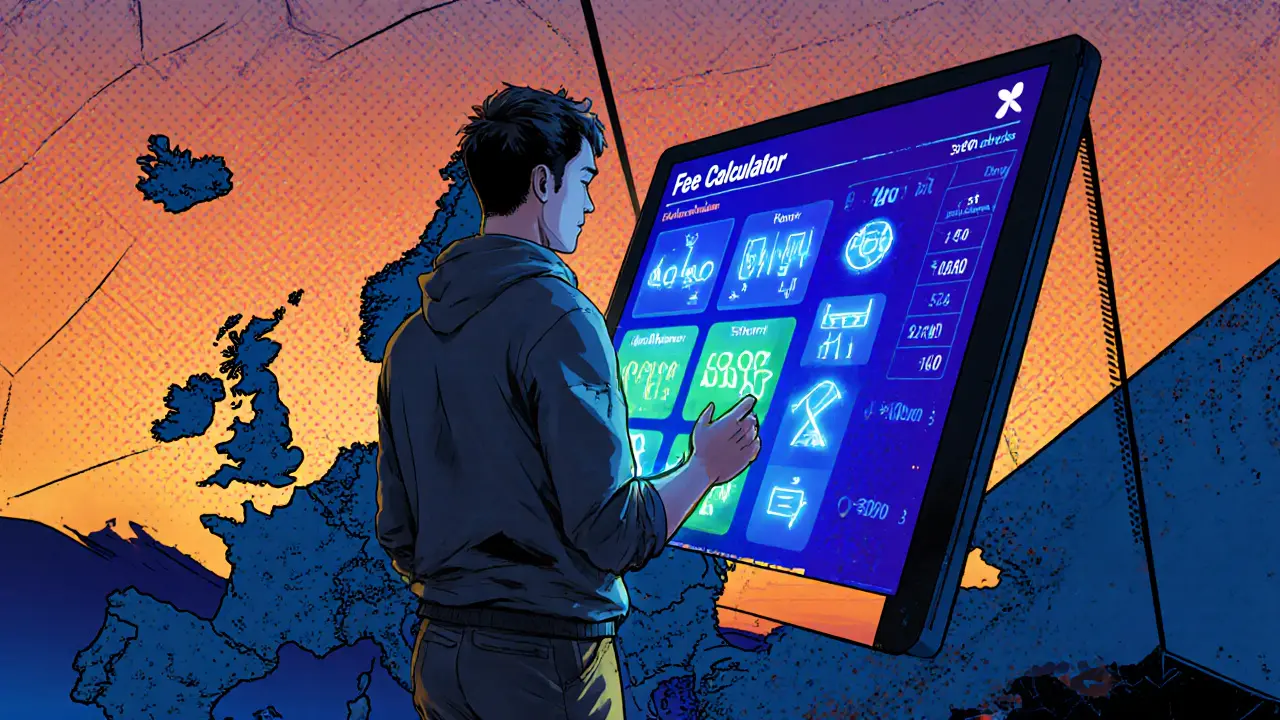
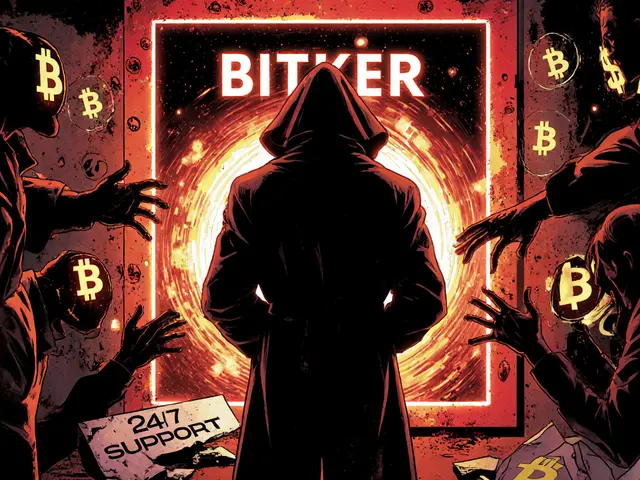
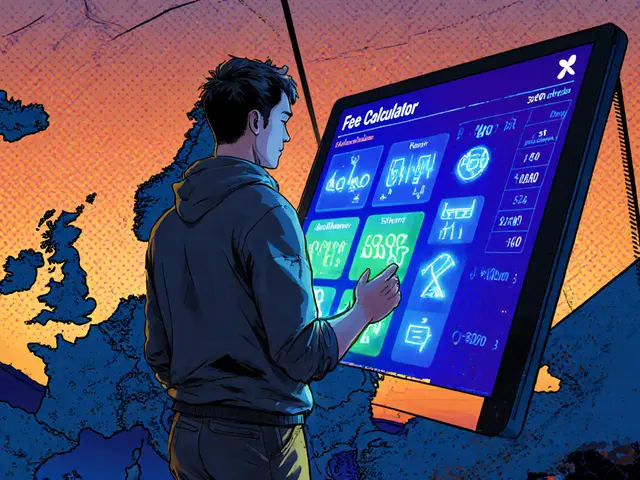

Gaurav Joshi
December 27 2024Charging a 0.2% spot fee feels unethical when cheaper options exist.
Kathryn Moore
January 1 2025Kanga's fee structure is straightforward but its Trustpilot score of 2.8 indicates poor user satisfaction.
Christine Wray
January 7 2025While Kanga lists over 140 assets and offers 100× futures, the lower Trustpilot rating suggests you should weigh security against convenience.
roshan nair
January 13 2025Alright folks, let me break down why Kanga Exchange might be a mixed bag for the average trader.
First off, the platform boasts a respectable 140+ crypto assets, which is decent but nowhere near the sprawling libraries of Binance or Kraken.
The spot fee of 0.2% is higher than Binance's tiered rates, meaning you’ll bleed a bit more on each transaction.
However, the futures offering of up to 100× leverage can be alluring for those seeking high‑risk, high‑reward plays.
What really sets Kanga apart is its network of over 250 physical OTC points across 12 countries, something most exchanges simply don’t provide.
If you value face‑to‑face cash‑in, that could save you a lot of hassle compared to the digital‑only models.
On the flip side, the regulatory backdrop is a bit murky, relying on a Seychelles licence with PFSA oversight rather than a robust multi‑jurisdictional framework.
This raises eyebrows for users worried about fund safety and legal recourse.
The Trustpilot rating of 2.8/5 is a red flag, hinting at potentially poor customer service or hidden fees.
Speaking of hidden fees, the platform’s UI isn’t the slickest; navigation can feel clunky, especially on mobile.
Security-wise, Kanga advertises standard two‑factor authentication, but there’s limited public information on cold storage practices.
If you’re a beginner, the learning curve might be steep, given the mix of spot, futures, and OTC options all in one place.
Conversely, seasoned traders may appreciate the all‑in‑one approach, saving them the trouble of juggling multiple accounts.
Ultimately, whether Kanga is worth your time hinges on how much you value physical OTC access versus a polished, globally regulated experience.
My advice? Test the waters with a small deposit, probe the customer support, and compare the total cost of trading against your main exchange.
If the experience feels solid, you can consider scaling up; otherwise, there are plenty of alternatives with higher ratings and lower fees.
Jay K
January 18 2025Thank you for the comprehensive overview; the points about regulatory oversight are particularly pertinent.
Kimberly M
January 24 2025Great summary! 👍 The OTC network sounds handy for those needing cash in hand.
Navneet kaur
January 29 2025Kanga looks shady they dont have strong licence it is not safe for our money.
Marketta Hawkins
February 4 2025Honestly, why trust a Seychelles platform when American exchanges have real protection? 🇺🇸
Drizzy Drake
February 10 2025I've been scouring the crypto exchange space for a while now, and Kanga's unique blend of digital and physical services caught my eye.
The fact that they provide over two hundred OTC locations across continents is something you don’t see every day.
For people who still prefer handling cash, that can be a lifesaver, especially in regions where banking is a hassle.
On the downside, their fee structure sits at 0.2% for spot trades, which is a bit higher than the aggressive tiered discounts you get on larger platforms.
Security is always a top concern, and while Kanga mentions two‑factor authentication, they haven’t been very transparent about cold‑wallet storage.
User reviews on Trustpilot are less than glowing, hovering around a 2.8 rating, suggesting that customer support might be an area needing improvement.
If you’re comfortable navigating a slightly rough UI and can tolerate a higher fee for the convenience of OTC points, it could be worth a try.
My personal take is to start small, test the withdrawal speeds, and see how responsive their help desk is before committing larger sums.
AJAY KUMAR
February 15 2025Wow, that’s a lot of nuance-feels like a rollercoaster ride just reading about it!
bob newman
February 21 2025Sure, let’s trust a platform that can’t even keep its Trustpilot score above 3, because why not?
Logan Cates
February 27 2025Looks like another exchange trying to hype up its OTC spots.
Shelley Arenson
March 4 2025Exactly! 🤷♀️ Might be overhyped but could still be useful for some.
Joel Poncz
March 10 2025Kanga exchang fee is 0.2% which is not to bad if you dont trade a lot.
Kris Roberts
March 15 2025In the grand scheme, the cost of a trade is but a whisper compared to the echo of financial freedom it may grant.
lalit g
March 21 2025Considering both the asset variety and the leverage limits, Kanga sits somewhere in the middle of the market spectrum.
Reid Priddy
March 27 2025Middle ground is just a euphemism for indecisiveness; better stick with proven giants.
Shamalama Dee
April 1 2025For newcomers, it’s helpful to compare the fee calculator directly with your expected trade volume to see if the 0.2% rate makes sense.
scott bell
April 7 2025Has anyone logged actual withdrawal times from Kanga? Curious about real‑world performance.
vincent gaytano
April 13 2025Oh sure, because withdrawal times are the only thing that matters when you’re losing money to fees.
Dyeshanae Navarro
April 18 2025Do your own research and only invest what you can afford to lose.
Matt Potter
April 24 2025Stay positive! Even small wins on Kanga can add up over time.